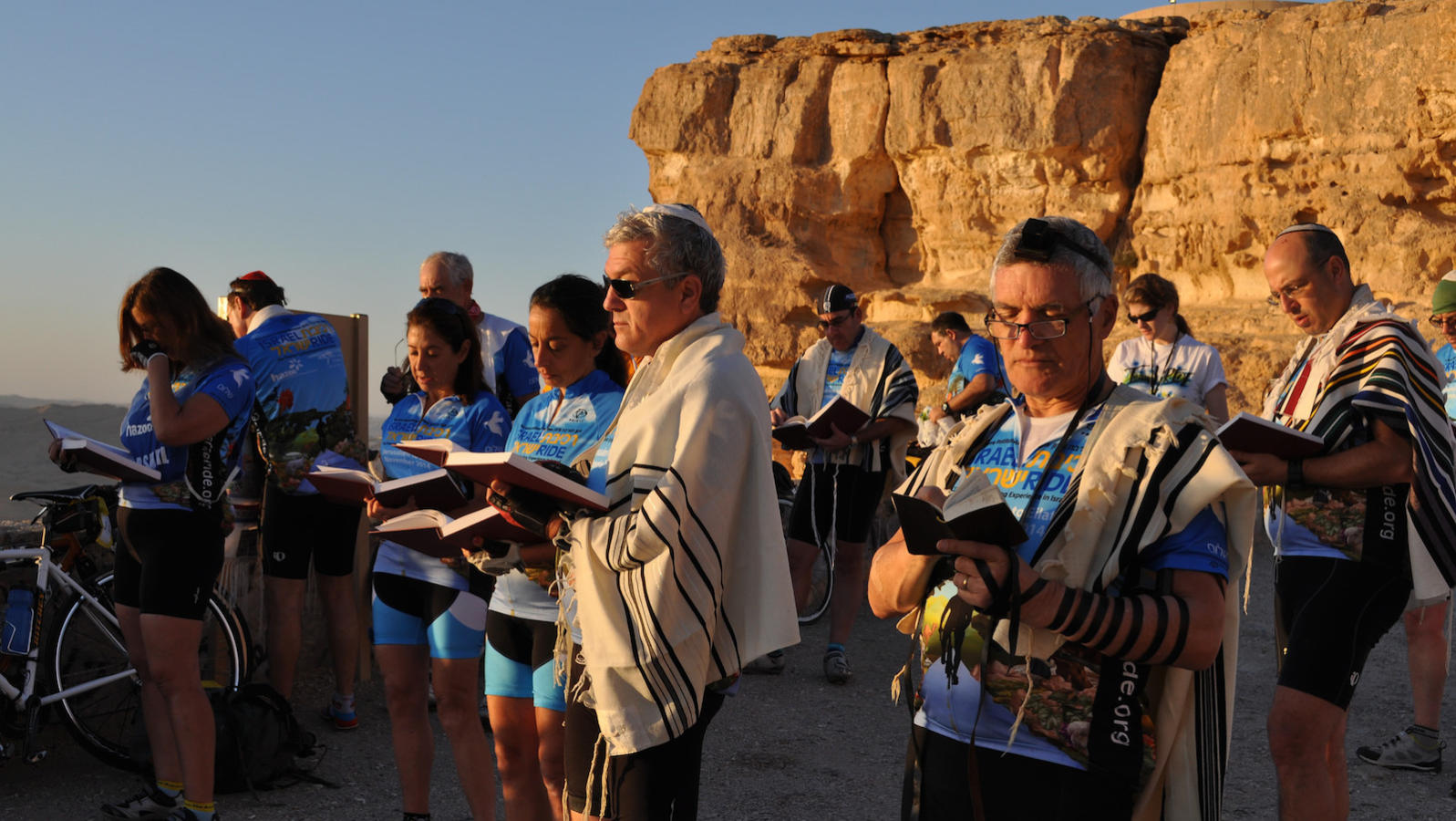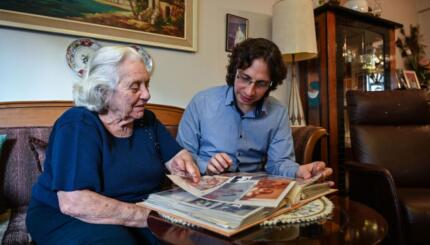Commentary on Parashat Nasso, Numbers 4:21-7:89
Parashat Nasso provides the script for one of the more penetrating segments of the Hebrew liturgy — the birkat kohanim, or priestly blessing. Over the millennia, this benediction has remained a seminal means of invoking the Divine in both the Jewish and Christian traditions. In this Torah portion, God dictates the blessing to Moses, who is to teach it to Aaron and his sons, the kohanim, or priests:
May God bless you and guard you.
May God make God’s face shine upon you and grant grace to you.
May God lift up God’s face to you and give you peace (Numbers 6:22-26).
At the Sephardic synagogue in which I was raised, Shabbat mornings were punctuated by the eerie call-and-response of the benediction and the congregation’s hopeful rejoinder: “May it be God’s will.” Integral to the priests’ recitation were the rituals accompanying the blessing that seemed to suspend kohanim and congregation together in a humbled thrall.
Recitation of the Priestly Blessing
At a specified time in the service, the community’s kohanim discreetly excused themselves to perform their preparatory ablutions. The faint sound of the priests’ shuffling was followed by a call-to-attention — Koh-Haahh-Neeeeeem! –summoning them to their posts before the ark. The men of the congregation gathered their children and their children’s children under the prayer shawls they had drawn over their heads.
The kohanim faced them, cloaked too in their billowing shawls. Their arms outstretched, their fingers extended and conjoined in the cultic v-shape, the priests swayed and chanted the blessing–distending its syllables, trilling its notes. Only after the kohanim had finished the blessing did the face-off of masquerading ghosts end: Modestly, the priests turned their backs to the congregation and took down their shawls, unveiling themselves before the ark.
With your help, My Jewish Learning can provide endless opportunities for learning, connection and discovery.
I actually was not supposed to have witnessed any of this. All of us, kohanim and congregation alike, were to have had our eyes closed or averted downward, to shield ourselves–it is traditionally said–from the awesome power that emanated from between the kohanim’s fingers. I have always suspected though that we protected ourselves not only from the Divine, but also from something very human: the tendency to turn an act of blessing into an act that invests one group with power at the expense of the other.
The Blessing Resides in the Community
The tented shawls, the downcast gazes, shield the community from the inevitable psychological contortions that easily transform a blessing into an act that underscores the hierarchy between blesser and blessed.
The benediction is therefore given and received blindly. The kohanim cannot see those upon whom they confer God’s blessing and the congregation cannot identify the priests who have done so. Rather than simply given or received, the blessing is instead resident within a community of both givers and receivers. The heavy presence of this shared blessing, I would proffer, helps explain the palpable mystery that is experienced as kohanim and congregation emerge together from beneath their shawls.
The aspiration to draw forth the shared blessing resident within a community is a defining feature of the posture taken by organizations, such as AJWS, in their pursuit of global development and justice through grassroots work. Grassroots work means facilitating change that is realized from within the community that seeks it. The goal is not to achieve blessing via the roles of priest and congregant, blesser and blessed. Rather, it is to discover together the blessing that already lives there–forged by a community’s own needs, developed according to its own vision, and pursued via the methods it itself identifies.
The Illusion of Blindness
Of course, the cultivated blindness of the birkat kohanim is in many ways an illusion. We are shielded from the priests’ faces, but we know their identities from other liturgical encounters–such as the calling of the kohanim to the Torah–that are plainly public.
Through these encounters there is thus an already-intact hierarchy of ritual status, in which kohanim are separated and elevated from the congregation of Israel. In the moment of blessing, however, we invoke the illusion of blindness –choosing to shed, or at least mask, the hierarchical relationship that is elsewhere respected.
We strive to cultivate similar illusions in pursuing global justice through grassroots work. Inevitably, there are power imbalances between those who give and those who receive aid and assistance. But through grassroots engagement we gesture toward blindness. We pull our shawls over our heads and turn our eyes downward in an effort to undo the hierarchy between giver and receiver, to render ourselves both recipients and givers of blessing.
May it be God’s will that when we emerge from beneath our shawls, we — givers and recipients alike — find our global community rife with blessing: guarded from harm, infused with grace, and joyful in its peace.
Provided by American Jewish World Service, pursuing global justice through grassroots change.
Sephardic
Pronounced: seh-FAR-dik, Origin: Hebrew, describing Jews descending from the Jews of Spain.
Shabbat
Pronounced: shuh-BAHT or shah-BAHT, Origin: Hebrew, the Sabbath, from sundown Friday to sundown Saturday.



